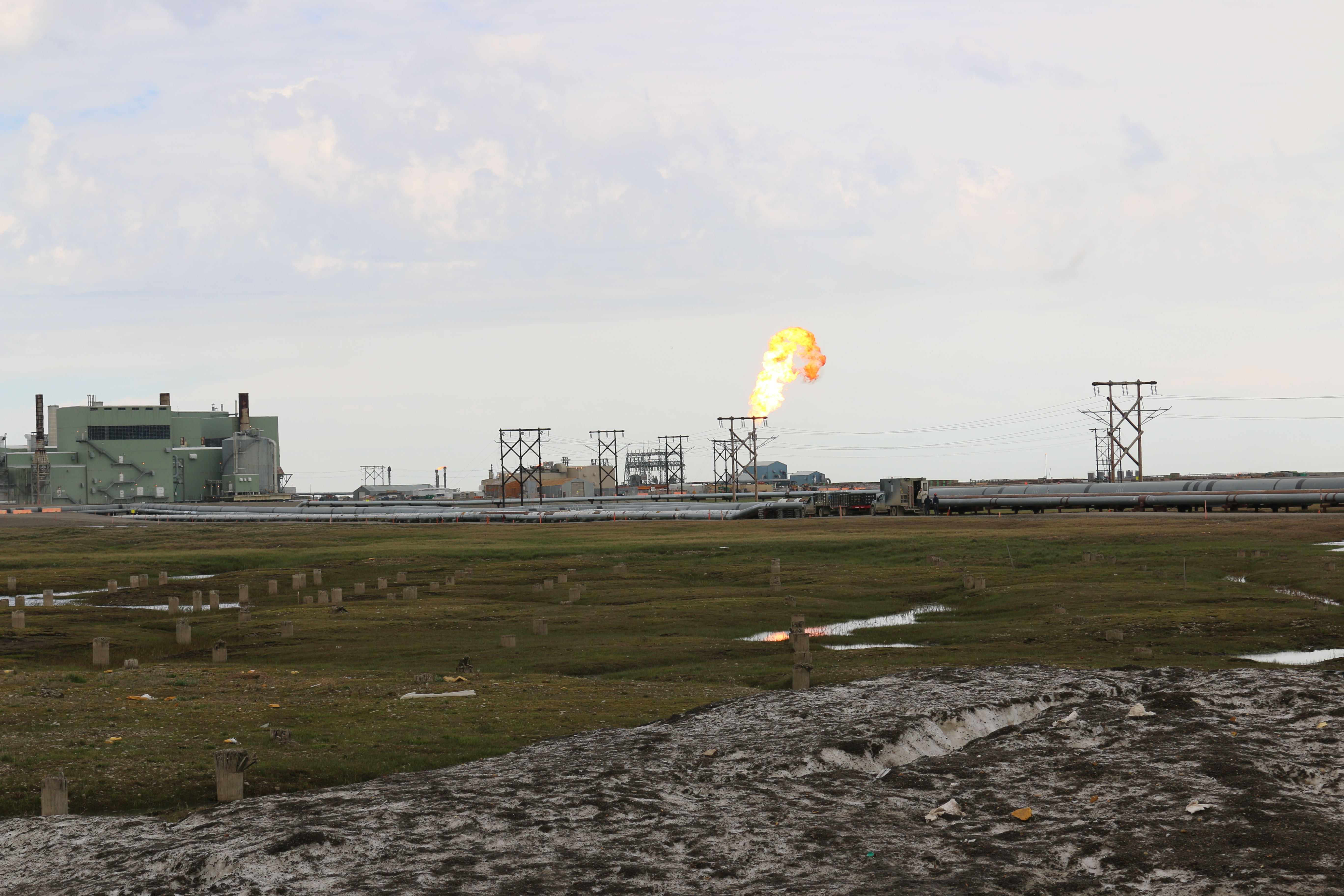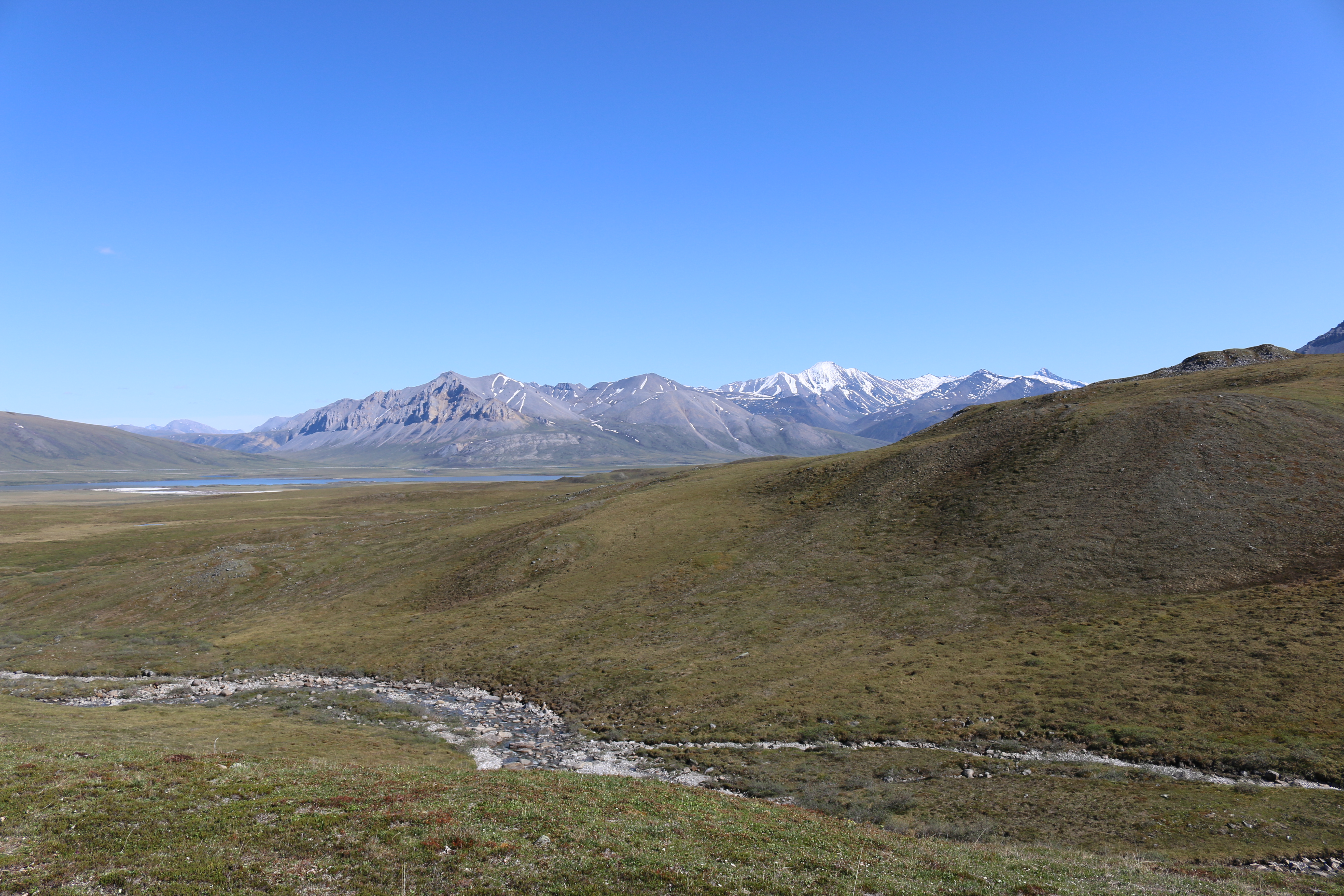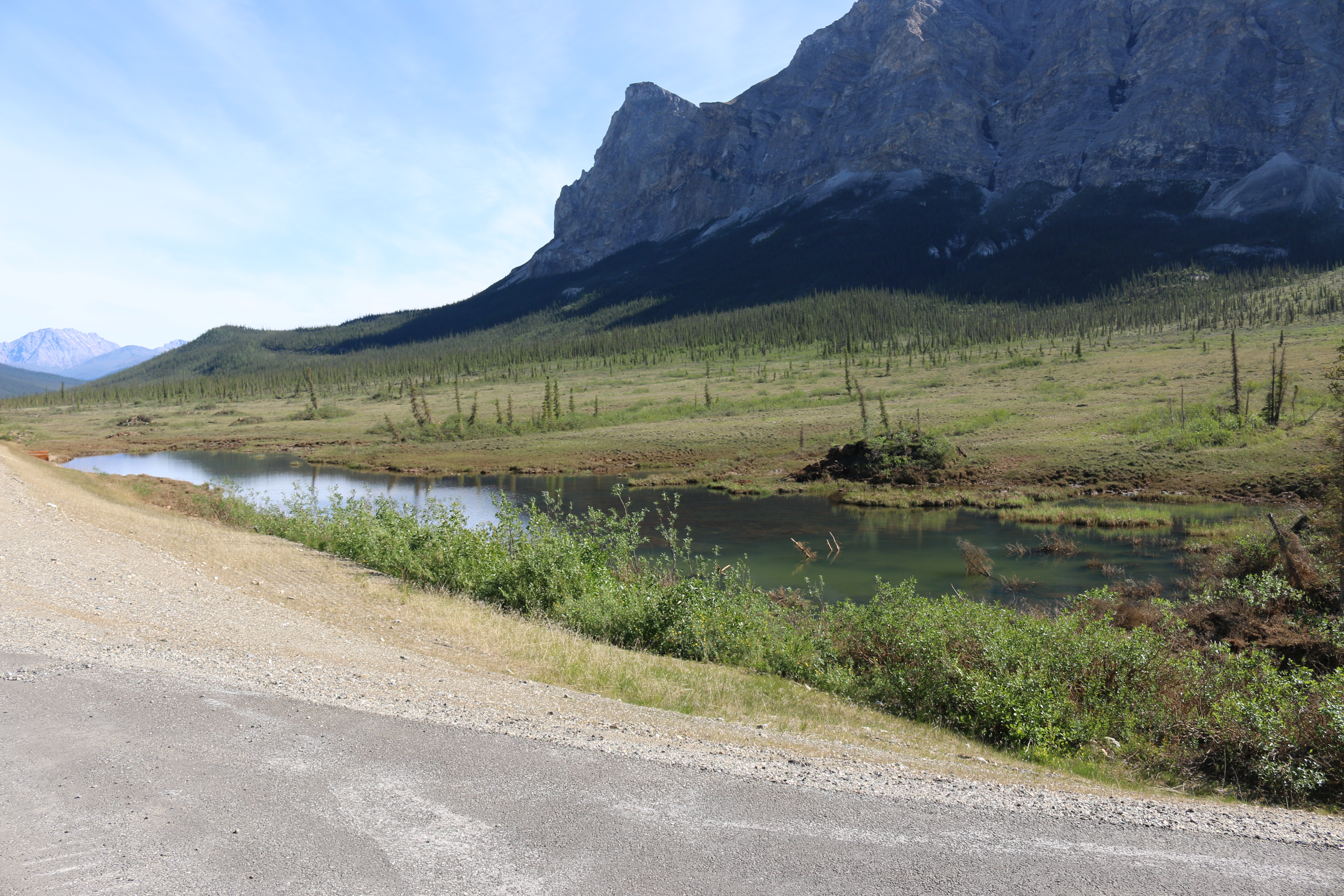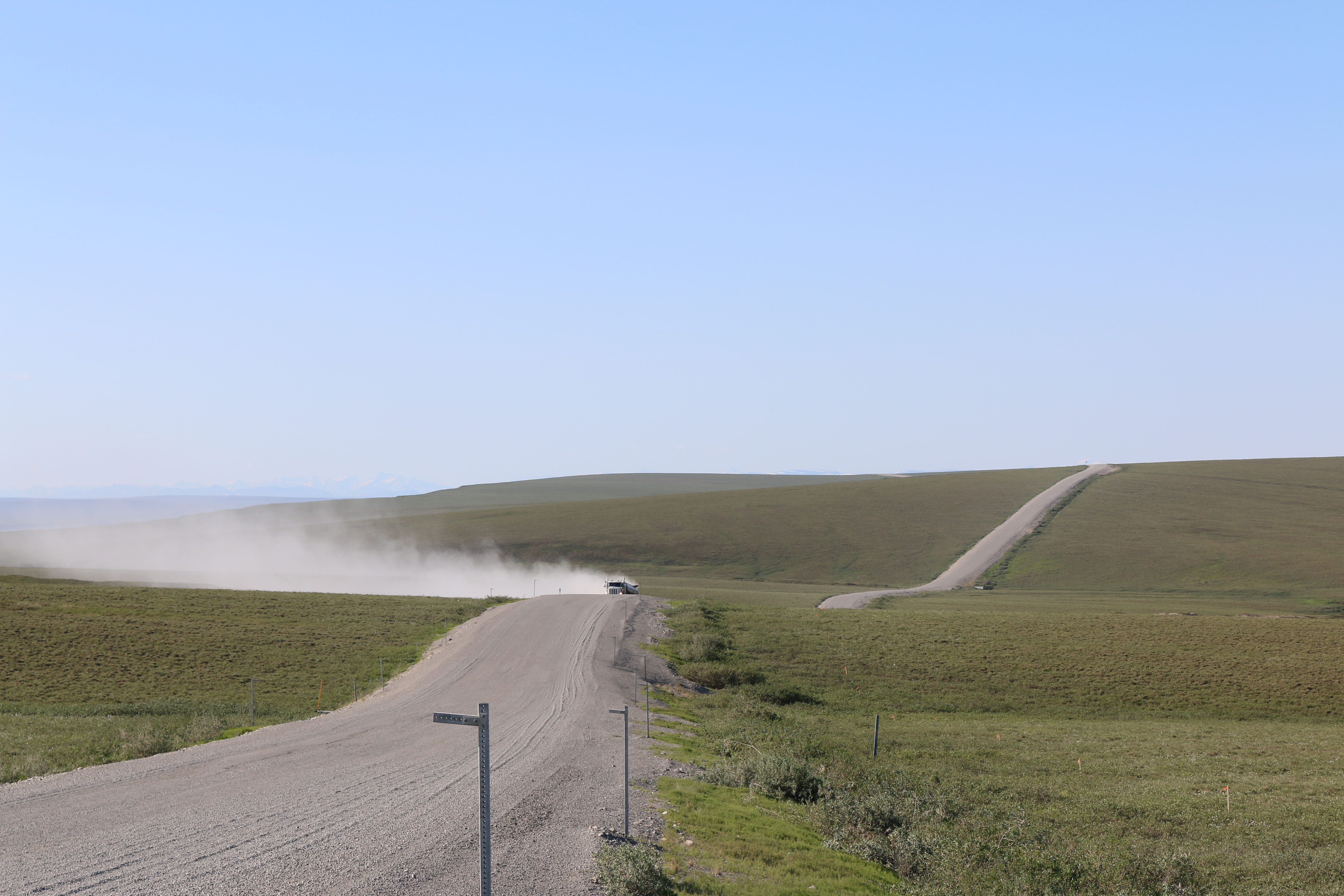Alaska's oilfield has been subtly changing the state's environment for decades. Will Congress notice?
A new study reveals decades of cumulative change at an oilfield where caribou raise their young
When I was a kid, I trapped ground squirrels using strips of carrot as bait. The squirrels lived in sandy burrows overlooking the Atigun River as it flowed out of northern Alaska toward the Arctic Ocean, and my dad studied how they overwintered there. We trapped the same squirrels over and over again – they love carrots. That allowed us to study them several summers in a row, and try to understand how an animal can spend eight months of the year underground, unconscious, their bodies approximately the temperature of ice water.
In 2015, I returned to the area and saw the trees slowly marching north. For those of us who live in or grew up in Alaska, climate change is a personal and visible reality. Weather has become unpredictable where it was consistent. Ice now builds up several inches thick on the roads due to extreme melt and freeze cycles early in the winter. Temperature records are broken all year, including as recently as July for a large portion of the state. The squirrels' population crashed when late spring snows covered the ground in 2013 and the males were left without food.

Caribou on the Colville River
These changes are symptoms of a warming climate visible in Alaska's cities, like Fairbanks, amid all the comforts of small-town America: great schools, hockey games, a kitschy downtown, diners, coffee shops, theaters, and strip malls. We owe it all to oil: 90 percent of Alaska’s state budget is from oil revenue. In 2008, oil prices plummeted from $140 to $32 per barrel, and Alaska's budget dropped proportionately. This left us without resources to cope with climate change, at a time when dozens of villages already required relocation at a price tag of $100 million each. In response, Alaskan policymakers raised the prospect of new drilling, with incentives of tens of millions in tax breaks to oil companies. They say drilling can be responsible, arguing that new technology limits the environmental consequences and that caribou, which use the region for calving, aren't bothered by the oilfield. Scientists have studied how the oilfield changes the tundra and life on it for decades, using planes, helicopters, and even photographs from the oil companies themselves. These long-term studies are giving us perspective on the cumulative effects of climate change, if we will listen to the findings.
To get to Alaska's oilfield, you drive north from Fairbanks on the only road, called the Haul Road, through the mountains, across the Atigun River, and over the Coastal Plain to the Arctic Ocean. It isn’t possible to actually see the Arctic Ocean, because the oil companies control access to all the land around the end of the Haul Road beyond the town of Prudhoe Bay. In 2015, I toured the oil fields and saw the Arctic Ocean for the first time. It was early June, and the sea ice should have been close to maximal extent. Several people said they had never seen it so far away so early in the summer – it wasn't even visible from the shore. That day it reached 82°F, the warmest ever measured at Prudhoe Bay. The record was broken again the next year, at 85 degrees, in a place where the average high for July is 57.

The Alaskan North Slope oilfield
Julia York
Today, 95 percent of the Coastal Plain is open for oil drilling and exploration. The last 5 percent is within the National Arctic Wildlife Refuge (ANWR), in an area called the 1002 (pronounced "ten oh two"). In 1980, Congress passed the Alaska National Interest Lands Conservation Act (ANILCA), which set aside this area for oil exploration. Only Congress can open the 1002 for drilling, and Republicans have attached this approval to the tax overhaul bill to compensate for proposed tax cuts. In November, Lisa Murkowski, the senior senator from Alaska, held a hearing on the opening of ANWR. Proponents argued that, with new technology, oil drilling directly affects a very small area.
Opponents say the area limit does not include roads and other construction, the tundra is already challenged by climate change, and that native peoples, specifically the Gwitch'in people, rely on the Porcupine caribou herd that migrates through the 1002.
For decades, scientists have researched how the oilfield has affected the Coastal Plain, including recent work by Dr. Martha “Tako” Raynolds and Prof. Donald “Skip” Walker, two biologists at the University of Alaska Fairbanks. Walker has studied this area since the 1970s, not long after oil was discovered there in 1968, and with Raynolds he examined aerial photographs of the plain, taken by the oil companies, between 1949 and 2011. By comparing photographs near infrastructure with those far from infrastructure over time, Raynolds, Walker, and their colleagues were able to estimate the cumulative effects of the oilfields and climate change on the tundra.

The tundra and Brooks Range mountains, Alaska
Julia York
Cumulative is the key word here. Like any ecosystem, the tundra of the Coastal Plain has some resiliency to change and stress. However, when multiple stressors combine, it can be difficult for any ecosystem to recover, let alone one as slow growing and specialized as the Arctic.
The team found a total of over 18,000 acres of infrastructure, most of which was built before 1988. Near the roads, the ground rapidly subsided and permanently flooded into geometric shapes, called thermokarst. In the Arctic, permanently frozen ground is called permafrost, and in the summer only the top 0.5-2 meters of earth are available for growth – the rest stays frozen. When this deeper permafrost warms and thaws, the ground sinks, floods, and becomes thermokarst. As large trucks drive back and forth over the gravel roads around the oilfield, they kick up dust that coats the plants for nearly a mile on either side. Some tundra plants, not adapted to dust, soon die and leave the permafrost without the protective insulation that plants provide.
The dust also coats the snow in the spring, causing it to melt faster. The roads cause large snow berms to build up, insulating the surrounding soil in winter and keeping the ground warm. All of these factors contribute to rapid thawing, and then collapse, of ground that is in the vicinity of roads and gravel pads.
The researchers also looked at areas far from roads, pipelines, or buildings. In these areas, they found very little change until 1989. Then, during the 1990s, summers were exceptionally warm, and thermokarst nearly doubled. The researchers think the increase in thermokarst is likely due to the warming climate, which is supported by data showing the deep permafrost has warmed about 5.4°F since 1987.
Natural thermokarst can recover if the active layer of organic matter (mosses, lichens, grass, soil, etc.) is undisturbed. However, the researchers found that nearby infrastructure increased erosion, exacerbated ground subsidence, and prevented recovery.
Thermokarst and erosion alter the movement of water across the tundra, and affect climate and ecosystems: they influence plant communities, animal populations and movements, the condition of roads and structures, and CO2 and methane cycles. Disruption of CO2 cycles in the tundra, particularly release of stored carbon in the permafrost, will likely lead to a disastrous multiplication of carbon release and warming across the Arctic, according to multiple studies.
During the recent Senate hearing, however, lawmakers did not discuss carbon feedback cycles. Instead, the Porcupine caribou herd was the primary environmental concern. The Central Arctic caribou herd had its migration routes disrupted by the building of the pipeline and the road, and the oilfield is built on their calving ground. Researchers still debate the effect of the construction, and it sometimes becomes contentious. Politicians, such as Murkowski, have interpreted this contention as a lack of evidence of consequences for the caribou.
The research has particularly focused on an area called Milne Point. Milne Point was undeveloped until 1978, and scientists counted caribou from helicopters before and after the road was built, until 1987. In the study, the researchers found caribou density decreased within four kilometers (almost 2.5 miles) of the road, and then increased between four and six kilometers (3.7 miles) away from the road. The scientists emphasized that calving caribou need habitat with high quality food, located away from predators and parasites, such as wolves and mosquitoes (young caribou get so many mosquito bites they can die of blood loss). Therefore, caribou select specific areas which meet these needs, and require sustained access to these resources. Eventually, the displacement may cause the caribou's population to shrink.

Collapse and flooding alongside the road used for hauling
Julia York
A later, follow-up study surveyed the area between 1991 and 2001. They found that caribou density within one kilometer (about half a mile) of the road had increased compared to the first study, and that density further from the road had not statistically changed. They concluded there was no evidence the caribou were avoiding or affected by the road, which directly contradicted several other studies.
Controversy ensued. The authors of the second study were criticized for selecting only the surveys with the most caribou and failing to account for the caribou population dropping by 43 percent in the area, even as the overall herd grew from 6,000 to 27,000 caribou.
These controversies may seem niche, but the only scientist invited to testify at the Senate hearing was the senior author of the second controversial paper, Matthew Cronin, who in 2001 accused US Fish and Wildlife Service biologists of “incompetence, ignorance, or a deliberate attempt to mislead" government officials, by failing to cite his work.
In November, he testified that because the caribou populations have grown substantially, we can conclude that oil development has had no negative affect, and that further development will not affect them. In response, other biologists argue that the herd may have grown even larger without oil development, and that displacement may not have obvious effects during a population growth cycle, but may dangerously exacerbate population declines, particularly when combined with uncertain effects of climate change.

Dust along the haul road from Fairbanks to Prudhoe Bay near the oilfields
Julia York
Indeed, climate change and all its unpredictable, cumulative consequences is like the winter twilight in Alaska: it colors all the research and evidence collected over decades differently. Looming over all of Alaska's problems, it requires us to reassess and question whether we can apply old evidence to today's decisions without first considering them in this new light.
Long-term studies like these have immense value in this context, spanning development growth and climate flux, and helping us see how the tundra and the caribou might cope. By ignoring climate change, Alaskan politicians are making their decisions in the dark. Decisions like the opening of ANWR, made in 1980, may have unforeseen consequences when enacted in 2017.
Peer Commentary
Feedback and follow-up from other members of our community
Daniel Ackerman
Ecology
University of Minnesota
Excellent article detailing how politics and ecology collide in the Alaskan Arctic. Opening ANWR for oil development could be disastrous for caribou, because they are already facing threats from climate change. For example, the warming-induced expansion of large woody shrubs in arctic tundra is reducing the abundance of lichen, caribou’s preferred winter forage.
Even if developers don’t find much oil in ANWR, the negative impact of drilling test wells will be permanent. Dragging heavy equipment across the tundra compacts the soil and permanently changes the vegetation community that caribou rely on. Tundra is less resilient to these types of disturbances than other biomes.
The vast majority of proven oil reserves on Alaska’s Coastal Plain are already available for leasing and drilling. Why not keep the relatively small remaining area of ANWR preserved?